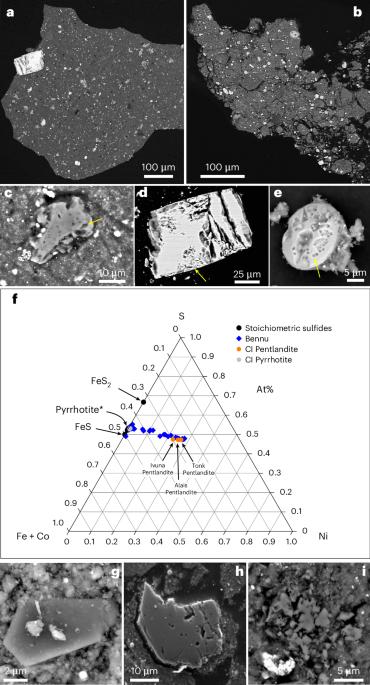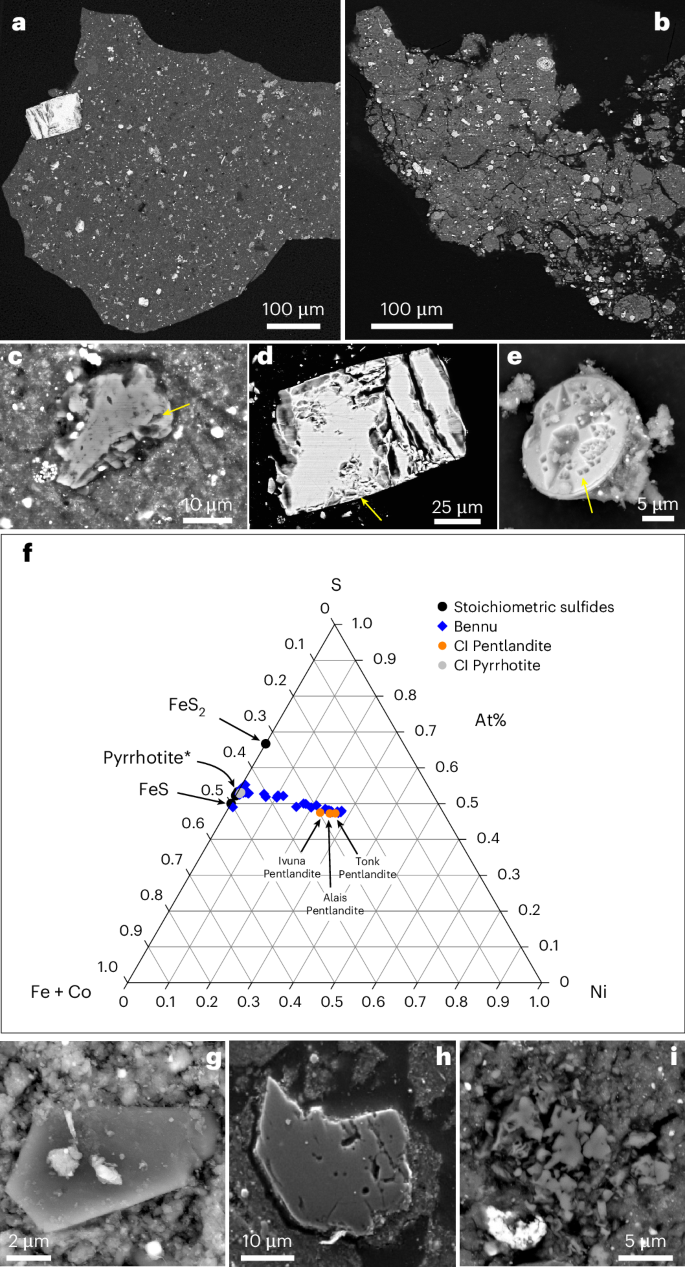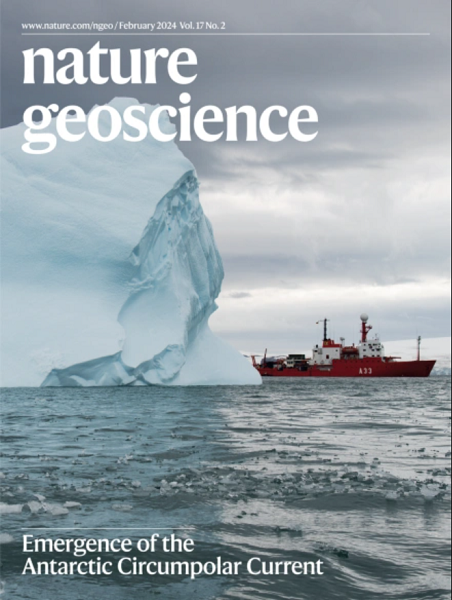Mineralogical evidence for hydrothermal alteration of Bennu samples
IF 16.1
1区 地球科学
Q1 GEOSCIENCES, MULTIDISCIPLINARY
引用次数: 0
Abstract
Samples of asteroid (101955) Bennu delivered by the OSIRIS-REx mission offer the opportunity to study pristine planetary materials unchanged by exposure to the terrestrial environment. Here we use a combination of X-ray diffraction and various electron microscopy techniques to explore the detailed mineralogy of Bennu samples and determine the alteration history of the planetesimal protolith from which they originated. The samples consist largely of hydrated sheet-silicate minerals, namely nanoscale serpentine and saponite of varied grain size, which are decorated with micro- to nanoscale Fe-sulfides, magnetite and carbonates. We observe sheet silicates parallel and normal to sulfide surfaces and as inclusions in sulfides; sulfur-rich veins transecting the sheet-silicate matrix; zoned carbonates and phosphates and sulfide and magnetite grains exhibiting embayment. The mineralogical evidence indicates alteration of accreted minerals by a fluid that evolved with time, leading to etching, dissolution and reprecipitation. Sulfide compositions indicate alteration at ~25 °C, similar to conditions inferred for asteroid (162173) Ryugu and Ivuna-type (CI) chondrite meteorites. The fluid probably evolved from neutral to alkaline, culminating with the precipitation of highly soluble salts. We conclude that Bennu’s protolith comprised mainly nanometre to micrometre silicates, with fewer chondrules and calcium–aluminium-rich inclusions than those of most chondrite groups. Samples returned from asteroid Bennu largely comprise hydrated sheet silicates with sulfides, magnetite and carbonate that indicate alteration by a fluid that evolved from neutral to alkaline, according to a micro- and nanoscale mineralogical study.


Bennu样品热液蚀变的矿物学证据
OSIRIS-REx任务带来的小行星(101955)Bennu的样本提供了研究原始行星物质的机会,这些物质即使暴露在地球环境中也不会改变。在这里,我们结合使用x射线衍射和各种电子显微镜技术来探索Bennu样品的详细矿物学,并确定它们起源的星子原岩的蚀变历史。样品主要由水合硅酸片矿物组成,即纳米级蛇纹石和不同粒度的皂石,其表面装饰有微至纳米级的硫化铁、磁铁矿和碳酸盐。我们观察到与硫化物表面平行和垂直的硅酸片,以及硫化物中的包裹体;富硫矿脉横切片状硅酸盐基质;带状碳酸盐、磷酸盐、硫化物和磁铁矿颗粒呈嵌套状。矿物学证据表明,随着时间的推移,一种流体改变了堆积的矿物,导致蚀刻、溶解和再沉淀。硫化物组成表明在~25°C时发生了蚀变,类似于小行星(162173)Ryugu和ivuna型(CI)球粒陨石推断的条件。这种液体可能从中性变成碱性,最终沉淀出高度可溶的盐。我们得出结论,Bennu的原岩主要由纳米到微米的硅酸盐组成,与大多数球粒陨石群相比,球粒和富含钙铝的包裹体较少。
本文章由计算机程序翻译,如有差异,请以英文原文为准。
求助全文
约1分钟内获得全文
求助全文
来源期刊

Nature Geoscience
地学-地球科学综合
CiteScore
26.70
自引率
1.60%
发文量
187
审稿时长
3.3 months
期刊介绍:
Nature Geoscience is a monthly interdisciplinary journal that gathers top-tier research spanning Earth Sciences and related fields.
The journal covers all geoscience disciplines, including fieldwork, modeling, and theoretical studies.
Topics include atmospheric science, biogeochemistry, climate science, geobiology, geochemistry, geoinformatics, remote sensing, geology, geomagnetism, paleomagnetism, geomorphology, geophysics, glaciology, hydrology, limnology, mineralogy, oceanography, paleontology, paleoclimatology, paleoceanography, petrology, planetary science, seismology, space physics, tectonics, and volcanology.
Nature Geoscience upholds its commitment to publishing significant, high-quality Earth Sciences research through fair, rapid, and rigorous peer review, overseen by a team of full-time professional editors.
 求助内容:
求助内容: 应助结果提醒方式:
应助结果提醒方式:


